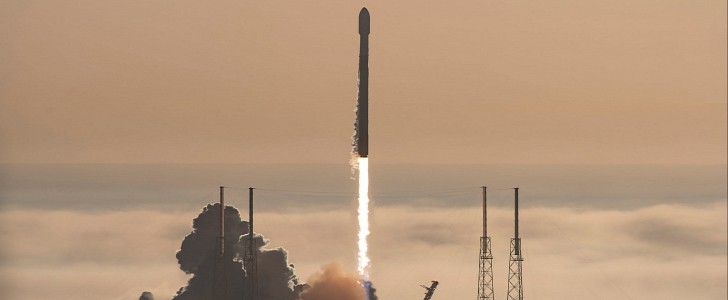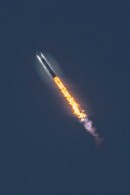Looks like SpaceX had a pretty busy week. After sending four astronauts to the space station for a six-month stay as part of NASA's Commercial Crew Program, the company's Falcon 9 rocket left our skies again. This time, it took off from Cape Canaveral Space Force Station and rose above a foggy Florida to put 53 Starlink satellites into orbit.
The recent launch was the last of a series of successful missions carried by SpaceX this past week. Starting in full force, on Monday, November 8th, the company retrieved the Crew-2 astronauts who returned from the ISS aboard a Crew Dragon capsule off the Florida coast.
Then, on Wednesday, another group of astronauts was carried to the orbiting lab. A Falcon 9 rocket took off together with the Crew Dragon spacecraft from NASA's Kennedy Space Center in Florida, marking SpaceX's third astronaut mission for NASA as part of the agency's Commercial Crew Program.
Finally, on Saturday, November 13th, a Falcon 9 rocket was waiting on Space Launch Complex 40 (SLC-40), ready for an epic liftoff. Previously, the launch suffered a delay due to poor weather at Cape Canaveral. After the launch pad got covered in dense fog, it didn't seem like the weather conditions would make the Saturday attempt easier.
However, at 7:19 a.m. EST, the vehicle emerged from the thick layer and rose into a clear sky with 53 Starlink satellites on board. About 15 minutes later, the satellites were successfully deployed, completing the fifth Starlink mission. This was also the 25th launch of a SpaceX Falcon 9 this year.
The new satellites are equipped with inter-satellite laser links, which will help them communicate with one another without the need for ground stations. Eliminating the use of ground stations will significantly speed up data transfer.
Eventually, SpaceX plans to launch thousands of Starlink satellites into Earth's orbit over the next few years. The recent mission added up to the existing constellation, which now counts 1,844 spacecraft.
Then, on Wednesday, another group of astronauts was carried to the orbiting lab. A Falcon 9 rocket took off together with the Crew Dragon spacecraft from NASA's Kennedy Space Center in Florida, marking SpaceX's third astronaut mission for NASA as part of the agency's Commercial Crew Program.
Finally, on Saturday, November 13th, a Falcon 9 rocket was waiting on Space Launch Complex 40 (SLC-40), ready for an epic liftoff. Previously, the launch suffered a delay due to poor weather at Cape Canaveral. After the launch pad got covered in dense fog, it didn't seem like the weather conditions would make the Saturday attempt easier.
However, at 7:19 a.m. EST, the vehicle emerged from the thick layer and rose into a clear sky with 53 Starlink satellites on board. About 15 minutes later, the satellites were successfully deployed, completing the fifth Starlink mission. This was also the 25th launch of a SpaceX Falcon 9 this year.
The new satellites are equipped with inter-satellite laser links, which will help them communicate with one another without the need for ground stations. Eliminating the use of ground stations will significantly speed up data transfer.
Eventually, SpaceX plans to launch thousands of Starlink satellites into Earth's orbit over the next few years. The recent mission added up to the existing constellation, which now counts 1,844 spacecraft.
Deployment of 53 Starlink satellites confirmed pic.twitter.com/bnYtOqUUfC
— SpaceX (@SpaceX) November 13, 2021






